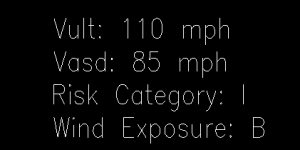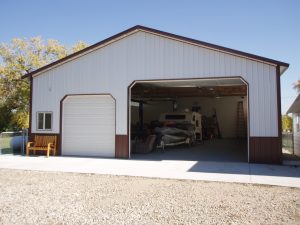And long-time reader Vincent Phelps has another great question: “CBS Sunday morning had a segment on CLT, Cross Laminated timber. It brought timber frame construction to mind. Your thoughts on this technique for the Pole builder?”
https://www.cbsnews.com/news/living-the-high-life/
Cross-laminated timber (CLT) is a large-scale, prefabricated, solid engineered wood panel. Lightweight yet very strong, with superior acoustic, fire, seismic, and thermal performance, CLT is also fast and easy to install, generating almost no waste onsite. CLT offers design flexibility and low environmental impacts. For these reasons, cross-laminated timber is proving to be a highly advantageous alternative to conventional materials like concrete, masonry, or steel, especially in multi-family and commercial construction.
A CLT panel consists of several layers of kiln-dried lumber boards stacked in alternating directions, bonded with structural adhesives, and pressed to form a solid, straight, rectangular panel. CLT panels consist of an odd number of layers (usually, three to seven,) and may be sanded or prefinished before shipping. While at the mill, CLT panels are cut to size, including door and window openings, with state-of-the art CNC (Computer Numerical Controlled) routers, capable of making complex cuts with high precision. Finished CLT panels are exceptionally stiff, strong, and stable, handling load transfer on all sides.
There are some CLT fallacies being circulated:
- CLT isn’t in the Building Code – wrong, CLT panels have great potential for providing cost-effective building solutions for residential, commercial, and institutional buildings, as well as large industrial facilities in accordance with the International Building Code. In 2015, CLT will be incorporated into the International Building Code (IBC). The IBC recently adopted ANSI CLT Standard PRG 320 into the 2015 IBC, so you can request a design review based on it now and submit it as an alternate material, design and methods (AMM).
- It is wood, it burns – Like using a few 12-inch-diameter logs to start a camp fire, mass timber does not catch fire easily. In fact, CLT acts more like concrete. Mass timber is not conventional so it is very hard to light, and once it is lit, it wants to put itself out. A research project recently completed at FPInnovations showed CLT panels have the potential to provide excellent fire resistance, often comparable to typical heavy construction assemblies of non-combustible construction. CLT panels can maintain significant structural capacity for an extended duration of time when exposed to fire.
- It takes a specialized crew – Keep in mind, CLT is just another form of glue laminated timber (glulam). It is just wood, so it designs and builds on the earlier technology. CLT panels, like other industry panels (precast concrete or SIP panels), provide easy handling during construction and a high level of prefabrication facilitation and rapid project completion. A conventional wood installation crew with other panel experience can lift, set, and screw down CLT panels, and with a manufacturer provided installation plan, it goes even faster.
- It isn’t environmentally friendly – CLT is manufactured 2×6 lumber from trees harvested from sustainable managed forests, and mostly Mountain Pine Beetle kill trees. If we don’t use them, they decay and emit carbon back into the atmosphere. Wood is also the only primary structural material which grows naturally and is renewable. In fact, according to “Sustainable Forestry in North America,” during the last 50 years less than 2% of the standing tree inventory in the U.S. was harvested each year, while net tree growth was three percent.
- It is expensive – When considering the total in-place value of a CLT system, it is cost competitive to other plate building materials. But you also need to consider all the value added benefits.More savings can be found in the reduced installation cost, usually 50% cheaper than installing other plate materials.With an earlier project completion date, you are open for business sometimes months ahead of schedule.The building structure will weigh less than half the weight of other construction types, so the foundation costs less money.
- Job site safety is dramatically increased due to the prefabricated CLT panels and usually the only power tools are pneumatic drills.
The intent of CLT is not to replace light-frame construction, but rather to offer a versatile, low-carbon, and cost-competitive wood-based solution which complements the existing light frame and heavy timber options while offering a suitable candidate for some applications which currently use concrete, masonry, and steel.
My take on your question Vincent – CLT is a pretty neat product, but just like SIPs,
https://www.hansenpolebuildings.com/2015/02/sips/
they are not a practical design solution for most post frame applications.
However, if you want to construct a wooden skyscraper, CLT might be just the thing!








